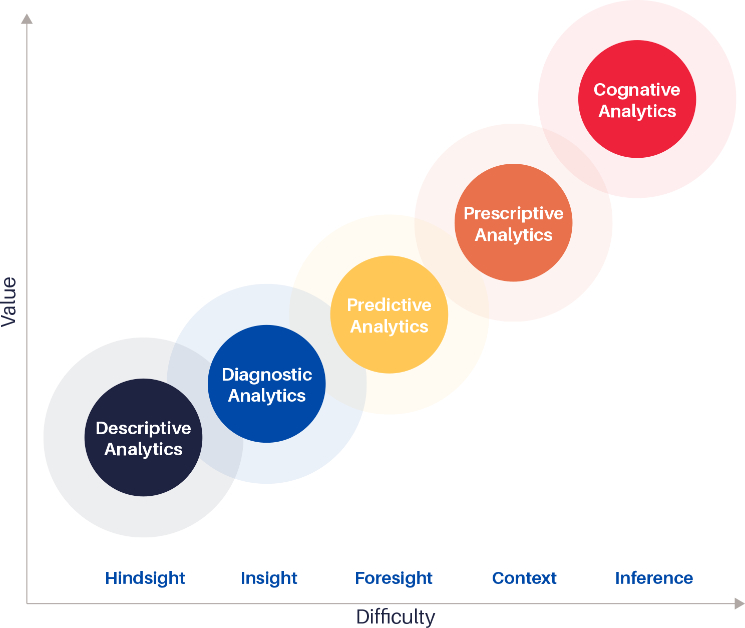Unlock the Power of Public Value Analytics Turbocharge your Government Advocacy
Unlocking the value embedded in government data is at the core of what Government Analytica does. The insights generated from such data powers our strategy, advocacy, and policy work to support companies, associations, nonprofits, and NGOs to make the case for public value and greater good of their proposals.
Finding government data to make your case can feel like looking for a needle in a haystack
To make the case for the public value of your proposals, you need to back up your positions with solid evidence. Such evidence often needs to be extracted from troves of government information and market data. Finding, understanding, and using this information to amplify the public value of your proposal takes time and expertise. We look at political economy, social sciences, public policy, macro and micro-economics, demographics, and a number of other fields to weave an evidence-based narrative for our clients and amplify the public value of their government proposals.

Data Analytics Expertise for Government Strategy, Public Policy & Proposal Development
By unlocking key trends and public value stories embedded in government data, Government Analytica helps our clients bring clarity and meaning to their proposals.
Our analysis helps you quickly understand important government data and research to guide your strategy
Our systems identify the most relevant data amidst a sea of information in support of your public policy goals
Our expertise can help you position your proposal with data-driven evidence to win hearts and minds
We capture rich sources of social and economic data. We analyze this information using our specialized techniques and tools. Our analysis aims to demonstrate the public value and the greater good of proposals or policy recommendations companies, associations, nonprofits, NGOs present to government.
Our 3 Core Consulting Services:
Government and Market
Analysis
Government Advocacy
Campaign Design
Analyzing
Public Value

How we Unlock The World of Government Analytics
We are awash in a world of data, representing a significant latent source of value for both the public and private sectors1.
Governments produce and publish copious amounts of data. Their statistical agencies measure many societal, industrial, agricultural, and service-sector factors. Their economists measure macro- and micro-economic conditions of the country. Various agencies collect data on their performance and how to improve it. Neither the private nor public sectors have yet developed a definitive, all pervasive model for measuring the value of this data2. The classic view of data analytics is to collect information to look back and analyze the past and learn valuable lessons in hindsight about the future. Another approach is to analyze the present and using those insights make improvements today. A third method is to project from past and present and develop foresight to envision the potential improved future outcomes. Today, using artificial intelligence, language analytics and machine learning, context can be understood. With the computational power of today, further context and inferences can be learned3.
Government Data and Analytics for Strategy, Advocacy and Policy Foresight
Unlocking the value embedded in government data is at the core of what Government Analytica does. The insights generated from such data powers our strategy, advocacy, and public policy work. We use data sources from national agencies worldwide, from key non-governmental organizations, and think tanks to generate insight and ultimately public value wisdom for a specific project. Our robust tools power our ability to enable our clients to develop better government strategies, elevate their advocacy campaigns, and create more powerful and compelling government narratives and storylines.
Government Analytica® Public-Value System
| GAR | GovAn Radar ™ | Tracking over 400 global influential multilateral organizations, think tanks, foundations, associations, and NGOs for early insights and trend-spotting | |
| GKB | GovAn Knowledgebase ™ | Rigorously capturing major world economies’ national, regional, and major cities: development plans, policies, legislation, and regulations on population, economy, trade, industry, public health, infrastructure, safety, and security | |
| GWD | GovAn World Data ™ | Continuously datamining the latest national, regional, and municipal statistics from countries covering 80% of global GDP ready for use in our analytics | |
| GPV | GovAn Public - Value Analytics ™ | A compendium of our analytical tools and outcome models customized to showcase the superior public value and positive outcomes of our client proposals to governments, policymakers, and communities |
At Government Analytica we collect data on:
Geography
Land, water, terrain, climate, natural resources, agriculture, etc.
People and Society
Demographics, age and gender distribution, urbanization, life expectancy, health statistics, health expenditures, physician density, hospital bed density, sanitation, education expenditures, unemployment etc.
Environment
Air quality, climate, land use, urbanization, fossil fuel use, water resources, waste and recycling, etc.
Government
National cabinet, legislative/policy branch, national priorities, budgets, public debt, taxes, etc.
Economy
GDP, inflation, agriculture, industry, service sector, industrial production, labor force, unemployment, exports, imports, reserves, national debt, etc.
Energy
Electricity and oil and natural gas production, consumption, exports, sources, etc.
Communication
Telecom system, broadcast, broadband, internet, etc.)
Transportation
Airports, pipelines, railways, roadways, waterways, ports and terminals, etc.
Data from a variety of sources can be combined to create higher-level
insights and foresights by using megatrends and comparing cities or countries
in similar stages of development with one another to anticipate a range of
potential achievable outcomes.
We do 3 types of Public Value Outcomes Analysis4:
Macro-Level or Country Analysis:
At this level of resolution, we provide analytics to our clients that help them understand how national government policy and strategy decisions impact a country.
Market entry or market sustenance for many clients require this level of understanding and extrapolation of risks and rewards.
Sector-Level or Industry Analysis:
This level of analysis helps our clients understand how various government policies can shape a specific sector of the economy or a specific industry. The more prominent the sector is within the national economy, the greater are the advocacy forces that try to shape government policy.
Our clients need these insights to advocate with situational awareness effectively.
Need or Problem-Driven Analysis:
At this level of analysis our clients are interested in and focused on a specific topic only. We provide a full advocacy force field-analysis and stakeholder mapping focusing on executive branch and legislative branch actors, non-governmental advocacy organizations, coalitions, and other influencing institutions).
We focus on showing the public value of our client proposals to amplify their voice and set them apart from the crowd.
A key source of our analytical information is data collected by government statistical agencies and those that collect and report socioeconomic information.

Public Data Sources
Statistical Agencies & Socioeconomic Government Data Sources
In every country in the world, key government agencies are responsible for collecting, analyzing and then sharing a variety of information and statistics on population demographics, health, economy, agriculture, industrial sectors, and similar elements. They capture the nations changes so policymakers can respond effectively. Other non-governmental institutions like United Nations, the World Bank and other multilateral banks, International Monetary Fund, European Union, Mercosur, ASEAN group of nations, and the like also produce global statistics and information that can readily be used. Much of this data is targeted towards globally accepted metrics. For example, Gross Domestic Product of a country has to be calculated in a very prescriptive way5.
This data often is reported by the country, cited by researchers and journalists, and influences markets. Government Analytica is linked to global governments’ data generation sources and each country’s dedicated national offices. At Government Analytica, we have automated the collection of this type of data. We warehouse it in our own databases for further analysis. In our commissioned work, we can tap into these rich sources of data at the city, county, province, prefecture, state, and national level.
Government Operational Analytics
Another class of Government data analytics has to do with the operational performance of various government agencies and how they can improve and serve their constituents better. This is similar to how a business uses data and analytics tools like 6-Sigma to improve operations. If this data is in the public domain, we will identify it and use it to analyze the public value of introducing efficiencies or innovations for a public sector client.
What we do not do!
In the government sector, a popular means of measuring attitudes, approval rating, and likelihood of support is to do polls or measure sentiments. An opinion poll is a survey designed to measure the views of a specific group6. News media as well as election campaigns parse such data to identify voter demographics and preferences for party, issues, and messaging. There are excellent companies that can be commissioned to do this type of work. We do not do such analysis at Government Analytica.

References
2. OECD. The application of data in the public sector to generate public value. In: The Path to Becoming a Data-Driven Public Sector. OECD Digital Government Studies. OECD; 2019:59-100. doi:10.1787/1ab27217-en
3. 5 Types of Data Analytics And Their Prominence. Soulpage IT Solutions. Published September 18, 2020. Accessed March 30, 2022. https://soulpageit.com/5-types-of-data-analytics-and-their-prominence/
4. Defining characteristics of political economy analysis. Accessed April 2, 2022. https://www.soas.ac.uk/cedep-demos/000_P527_PEPP_K3736-Demo/unit1/page_13.htm
5. Glossary | DataBank. Accessed March 31, 2022. https://databank.worldbank.org/metadataglossary/world-development-indicators/series/NY.GDP.MKTP.KD.ZG
6. House of Lords – The politics of polling – Select Committee on Political Polling and Digital Media. Accessed March 31, 2022. https://publications.parliament.uk/pa/ld201719/ldselect/ldppdm/106/10616.htm